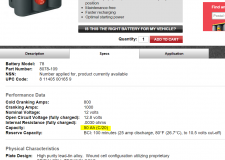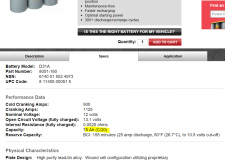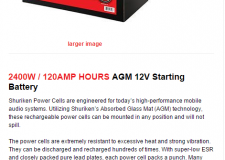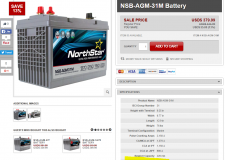Should I add capacitor or upgrade the battery if I add amp or upgrade my audio system?
Should I add capacitor or upgrade the battery if I add amp or upgrade my audio system? Well this is a very common question we get from our many customers. Keep in mind you will get many different opinions on this topic. Each scenario is different and some of the suggestions may or may not apply in your particular scenario. This write up is for the majority of Toyota Tundra owners. We have installed and assisted in installing THOUSANDS of audio system for our customer base. AT the time of this article we have 23,000 customers and have fulfilled over 32,000 online orders. Plus we install MANY audio systems here in the San Antonio TX area. We have people come from other states to have audio systems installed. We had a vehicles shipped to our shop from as far as Puerto Rico. We also perform aftermarket stereo installations for local Toyota dealers here San Antonio. So, to say we have a lot of experience with Toyota’s is a bit of an understatement. If you have a cousin or friend of friend that disagrees then by all means, please go with their suggestions.
The short answer; for the vast majority of audio system upgrades, you will NOT want or need a capacitor. However, you will want to strongly consider upgrading your stock battery. I have read so many crazy posts over the years, I hope to try to cover as much information on battery selection and the NON use of a capacitor. Personally, I have built and install hundreds of audio systems under 2,000 watts RMS, 4 systems yielding over 12,000 watts RMS in some of my show cars and even in my boat. Not one of those systems required a capacitor. When you properly power and equally as important ground a vehicle, you will notice an increase in sound quality and avoid dimming lights form a higher powered system.
Batteries are like vehicles you need to choose the right battery for your particular needs. So many people will chime in about which battery is best without a clue about batteries. . To many people are fooled by CCA or Reserve capacity but these numbers rarely give the actual load capacity of the battery. So before you purchase a battery or spend a ton of money on something you don’t need. Start with following questions: 1. Do I need a battery that can take heavy abuse? (occasional off-roading hardly requires a “tough” battery) 2. Do I need a battery that provides a long run time with the engine shutoff? For example you tailgate with high powered stereo cranked up for hours. 3. Do you use a winch regularly? There are a few other questions, but do not relate to most folks . . So before you spend a lot of money or time on something you don’t need, do a little homework.
If the answer is no to above questions, just save your money and get a decent battery with a good warranty. If the answer is yes, then you need to narrow down do I need a battery than can take abuse or run time? Which is more important?
A major problem is many manufacturers will use different calculations to rate their reserve & Ah hour rating. So you need to be sure and read the fine print.
In my rock crawler I use an Optima yellow top because it is a dual purpose battery that can take abuse. It has a decent Ah rating and a great starting power. Since I winch a lot and I need to use it to start the crawler every time I manage to kill it, that battery works great.
In Tundras – with audio systems, I like use the Shuriken AGM 120Ah battery. It can take some abuse, but this battery has over 45Ah more run time than the heftiest yellow top (at time of this post). It does great with a winch (only use occasionally) and I can tailgate with my loud stereo for much longer play time.
Check out this post for step by step instructions on how to install an AGM battery into your Toyota Tundra. Note, we have done this same upgrade on Toyota Tundras ranging from 2007 – 2015. NOTE: We have only done this on Tundra’s equipped with a 5.7 liter engine.
Ok, so why did I choose Shuriken? Well after years of trying different batteries and REAL world testing, the Shuriken has an amazing bang for buck. We have a show truck we use car shows. The truck is crazy loud and can run for up to 8 hours with 3 Shuriken 120BTs. WE had a couple of other brand batteries that we pulled out over time testing. Additionally, my personal boat has over 5,000 watts RMS and I rely on my batteries to play ALL day when we are tied up in the party cove entertaining all the crazy girls dancing! What good is a battery if it can’t hang longer than the party?
Some other issues to ponder:
Will the battery fit?
Are the terminals in the correct spot?
Will I need to change my battery connectors?
Will I need to modify my battery tie down?
Plus quite a few others . .
Battery Types:
Wet Cell (Flooded) – This is the average basic battery installed by auto manufacturers and the most popular replacement battery you will pick up at your local parts store. There are two types to choose from serviceable and sealed.
AGM – Absorbed Glass Matt are constructed of suspended plates that are in close proximity with very little liquid and can be mounted in just about any position. Common applications include high performance engine starting, power sports, deep cycle, solar and long term storage battery. The larger AGM batteries are typically good deep cycle batteries and they deliver their best life performance if recharged before allowed to drop below the 50% discharge rate. When Deep Cycle AGM batteries are discharged to a rate of no less than 60% the cycle life will yield hundreds of deep cycles. They are dual purpose batteries. You can use them to start your application and provide a deep cycle that will ruin standard wet cell batteries.
Gel Cell – The Gel Cell is similar to the AGM style because the electrolyte is suspended, but different because technically the AGM battery is still considered to be a wet cell. The electrolyte in a Gel Cell has a silica additive that causes it to set up or stiffen. Gel Batteries are best used in VERY DEEP cycle application and may last a bit longer in southern regions where heat is a batteries major enemy.
Battery Comparison:
At the time of this post, below is a picture and specs for the the following batteries.
Yellow Top – 8051-160
Ah: 75 (C/20)
Weight: 59.8 lbs
CCA:900
Red Top – 8078-109
Ah: 50 (C/20)
Weight: 39.5 lbs
CCA:800
Shuriken SK-BT120
Ah: 120 (C/20)
Weight: 79 lbs
CCA:920
Northstar NSB-AGM-31M
AH: 102 (C/20)
Weight: 76 lbs
CCA:900
As you can see in the specs provided by each manufacturer. The Shuriken edges out all the batteries in run time. However as stated above, you need to choose the right battery. We use the Shuriken BT-120 in Toyota Tundras and Tacomas. They will fit into the truck with some modifications. I personally use the yellow top in my rock crawler because the battery is made for heavy physical abuse. Most Toyota Tundra and Tacoma owners are not going to abuse their truck at the level of a rock crawler. Northstar makes a great battery and they are very expensive. However, they have a better warranty than the Shuriken BT-120 1 year warranty. I am obviously biased towards the Shuriken. I have been using them for over 5 years in my boat. The same 3 batteries run my 5,000 watt (RMS) system all day long! What good is a great stereo with a battery that can’t hang?
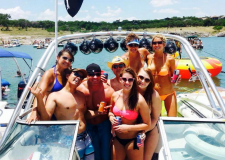
Do I need to do the Big 3?
First off some of you guys are probably asking what is the Big 3 (see below)? Over the years, most car audio guys have probably heard about the big 3 upgrade. This upgrade stems from the OLD days when Chevy & Ford STOCK alternators had a max amperage output of roughly 50 amps. Times have changed along with power requirements. For example, if your 2007+ Toyota Tundra has the tow package, you probably have 150 amp alternator. Cars these days have way more electronics and require a lot more power than the “old days”. So unless you are building a CRAZY system, you only need to upgrade your chassis ground in your Tundra. Check out our how to page here. If you purchase a battery similar to our recommendations above, you will not need a capacitor.
What is the Big 3?
Larger gauge power wire from alternator positive to battery positive, Larger battery wire negative to chassis, and larger engine ground wire to chassis
Click here to see how to upgrade the battery in your Toyota Tundra.
